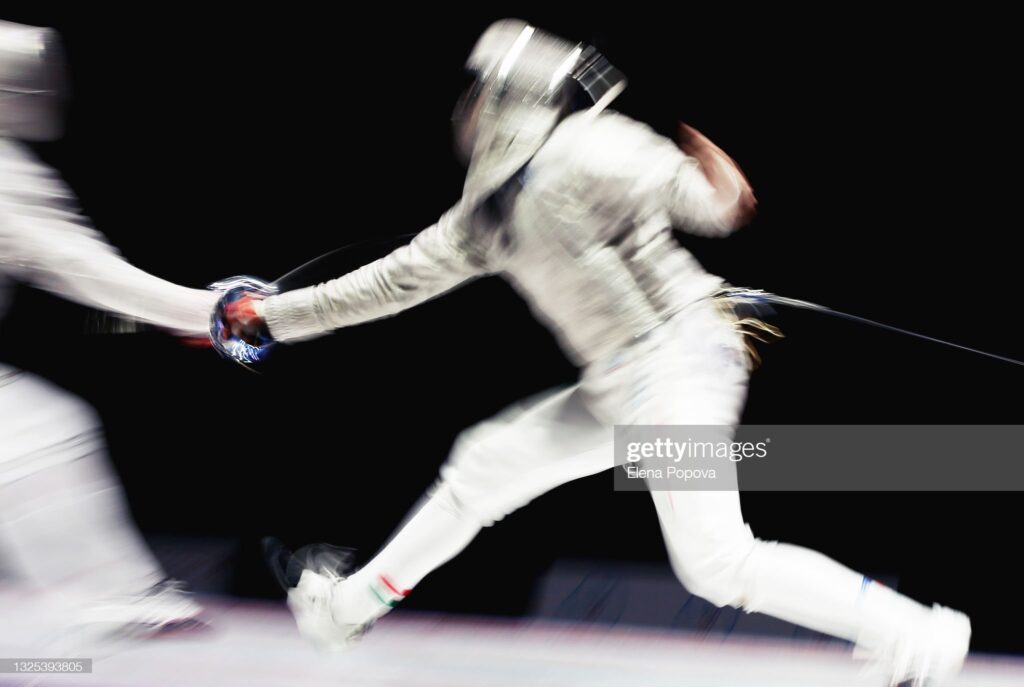Fencing as an Olympic sport
 The history of the origin of fencing
The history of the origin of fencing
About three thousand years ago, in Egypt, on the occasion of the victory over the Libyans, Pharaoh Ramses III organized a kind of fencing tournament.
In the Middle Ages, only the aristocracy could engage in this discipline. Simple inhabitants and peasants could only be fencing on sticks, sometimes upholstered in iron or on halberds.
Spain revived fencing as the art of swordsmanship and rapier in the 15th century. It was in Spain that the rapier appeared with the now classic look of the hilt, with a characteristic bowl-shaped guard.
Fights on rapiers, sabers and swords among men in individual and team tournaments have become an integral part of the Olympic Games in 1896. World championships in swords among men appeared in 1921, as for the saber, it happened in 1922, and on the foil competitions took place starting in 1926. The Fencing World Cup began to be held already in 1972. Budapest was the city that hosted the first fencing competitions as we know them. It happened in 1986. Fencers were able to get a feel for the first European Championship in 1981.
Find time to relax
Everyone needs a reboot from time to time. Some people need meditation for that. But some just want to break away, even to the moon, but rather to Las Vegas. If the second option is closer to you, then we know how to help you feel like in the capital of the casino. For this, it is not necessary to spend money on a plane ticket. Enough to trust n1 interactive ltd. Here are collected the best casinos, and most importantly, each of them is as safe and reliable as possible. With the Live Casino feature, you are guaranteed a Las Vegas experience anywhere in the world. And pleasant bonuses upon registration will delight you with their generosity. Even if you are not new to the casino, pleasant surprises await everyone. It is best to make your choice in favor of the best casino N1, relax and just enjoy a pleasant pastime.
Fencing rules
The rules and nature of the competition differ depending on the type of weapon, and there are individual and team competitions. In fencing, weapons such as the rapier, saber, and sword can be encountered. We present to your attention a set of rules in accordance with the subspecies of the discipline.
1. Individual competition
Each fight is played in three rounds of three minutes each. Breaks between rounds last only one minute. To win the duel, you need to be the first to score 15 points or score more points after the end of the third round than the opponent. In the event of a tie, one minute is added, and the winner is the one who first inflicts an injection on the opponent.
2. Team competition
The team consists of three people. The winner is the team that scores 45 points before the opponent or after the end of three matches the total points will be greater than that of the opponent. If there was a draw at the end of the third fight, then one more minute is added, and the fight continues until the first hitting. If during this minute no one has delivered hitting, then the winner is determined by lot by tossing a coin.
3. Rapier
During the duel, no matter what happens, the participants are forbidden to repair weapons, remove the tip of the rapier, or perform any other actions without the permission of the judge. During the fight, it is forbidden to change the hand in which the athlete initially holds the weapon. If this rule was neglected, then the hitting made after that to the opponent is not counted. The judge counts only hitting in a certain zone. The affected area is considered only the body of the enemy. Hitting to the head, arms and legs do not count. It happens that a hitting into the non-scoring zone is still committed by someone. This can happen both with a direct attack and as a result of a parry. In this situation, the fight immediately stops. Subsequent hitting, if they are made before the referee’s command, are not automatically counted.
4. Saber
The saber is a cutting weapon. In a saber duel, to earn a point, you need to hit the opponent in a certain area either with the chopping edge of the weapon or with its trailing edge. The scoring zone is only a part of the opponent’s body above the waist. When a strike is made outside the scoring zone, the fight is stopped, but the point is not awarded. The arbiter may award penalty points. A blow that is inflicted by a guard does not count. Penalty points are awarded for hitting the guard by the judge. Strikes should be completed. Simply touching the scoring area with a saber will not bring points.
5. Sword
The sword is an incredibly piercing weapon. An injection is applied only with the tip of this weapon. The rules are very similar to the rules of a foil duel, but the scoring area is different – points are awarded for hitting any area of the opponent’s body. Penalty points are also awarded.
Swordsman Outfit
The fencer’s equipment is thought out to the smallest detail, because in addition to protection, the athlete should be as comfortable as possible to move in it. The fencer’s protective suit consists of a thick jacket and trousers. Pants are characterized by the fact that they are knee-length and have suspenders. All of this is made from lightweight Kevlar. For fencing, special shoes are used, distinguished by their flat soles. An integral part of the fencers’ equipment is a mask with a metal mesh and a collar that serves to protect the athlete’s throat. Be sure to wear gloves on your hands. Fencers put on special overalls under a protective suit.
What can be summed up about such a sport as fencing? Foremost, it’s great. Secondly, it was originally conceived as a noble occupation, the passion of the nobles. This adds a special charm in the eyes of the viewer. Thirdly, in combat, the swordsman’s head works more than the body. In battle, you need to see the weaknesses of the enemy in a short period of time, lead him to make a mistake, and make an accurate, quick attack. Or have time to react and defend in time if the enemy figured you out earlier

